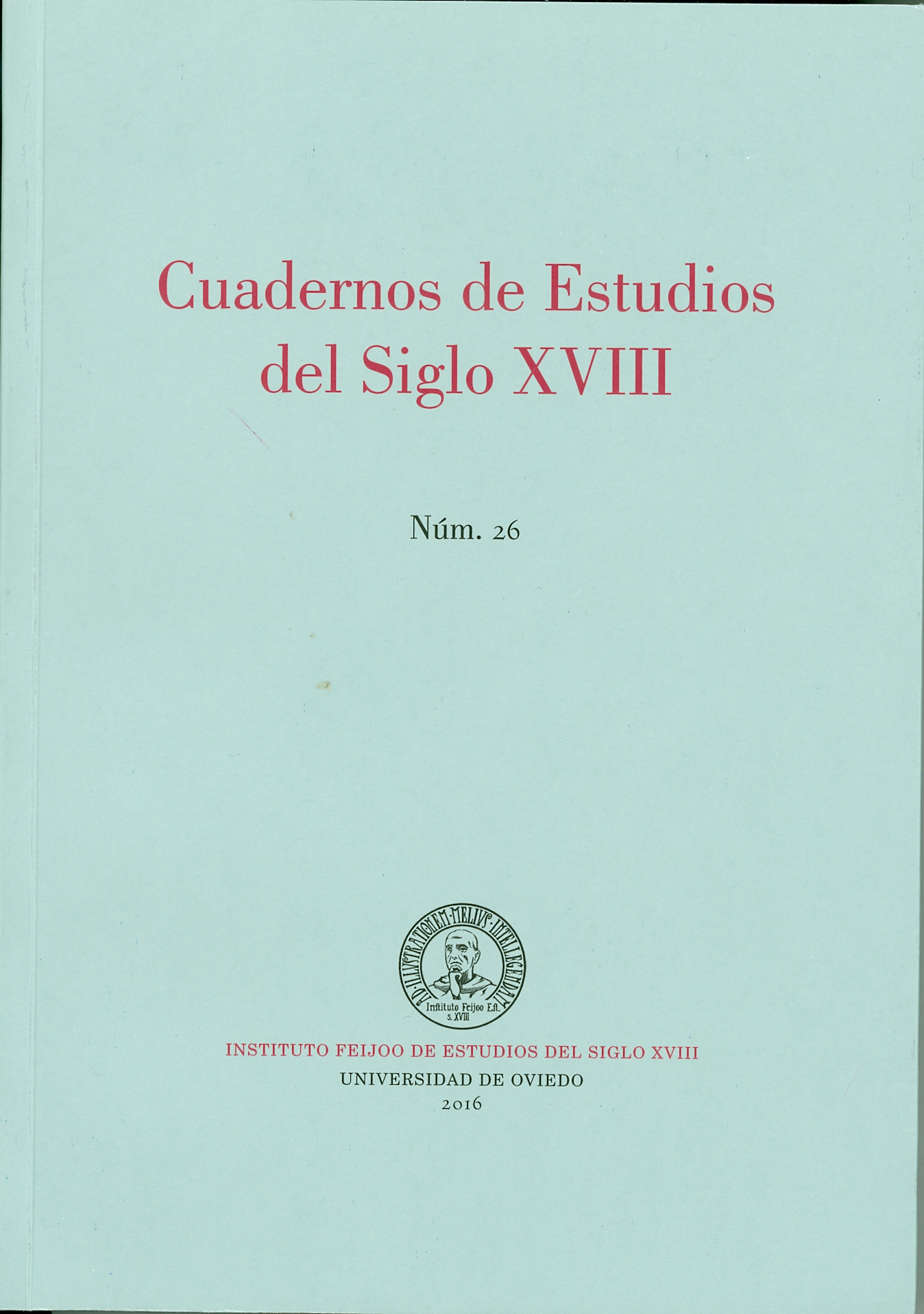Abstract
RESUMEN
Las Cartas marruecas de José de Cadalso se inician con una referencia explícita a Cervantes y su «inmortal novela en que criticó con tanto acierto algunas viciosas costumbres de nuestros abuelos». Con esta alusión directa, Cadalso se erige como lector privilegiado del Quijote a la vez que se sitúa como heredero genealógico de una tradición de práctica narrativa con fines explícitamente críticos. Más que un libro gracioso, Cadalso identifica el Quijote como una compleja constelación de técnicas literarias como la parodia, la poliglosia o la representación de imágenes discursivas, y afirma que su proyecto literario es un ejercicio principalmente negativo. Este trabajo se propone examinar la introducción de las Cartas para identificar en ella las características novelísticas que Cadalso habría encontrado en la obra de Cervantes con el objetivo de recuperar en sus Cartas el modelo de la ficción crítica establecido siglo y medio antes, examinando en particular los aspectos formales que se reproducen o se adaptan al contexto y a las intenciones de Cadalso a finales del siglo XVIII.
PALABRAS CLAVE
Cadalso, Cervantes, Cartas marruecas, Quijote, novela, novela epistolar, Bajtín, polifonía.
TITLE
Novelistic variations: the reception of the «Quijote» in the «Introduction» to the Cadalso’s «Cartas marruecas»
ABSTRACT
José de Cadalso’s Cartas marruecas begin with an explicit reference to Cervantes and his «inmortal novela en que criticó con tanto acierto algunas viciosas costumbres de nuestros abuelos». With this direct allusion, Cadalso presents himself as a privileged reader of the Quijote while also situating himself as genealogical heir of the tradition of narrative practice with specifically critical ends. More than a merely comical book, Cadalso identifies the Quijote as a complex constellation of literary techniques including parody, polyglossia and the representation of images of discourse, and affirms that his own literary project is a principally negative one. This study proposes to examine the introduction to the Cartas in order to identify in them the novelistic characteristics Cadalso found in Cervantes’ work with the objective of recuperating in his Cartas the model of critical fiction established a century and a half earlier, examining in particular the formal aspects that Cadalso reproduces to his own context and intentions in the late eighteenth century.
KEY WORDS
Cadalso, Cervantes, Cartas marruecas, Quijote, novel, epistolary novel, Bakhtin, polyphony.

This work is licensed under a Creative Commons Attribution-NonCommercial-NoDerivatives 4.0 International License.
Copyright (c) 2017 Cuadernos de Estudios del Siglo XVIII

